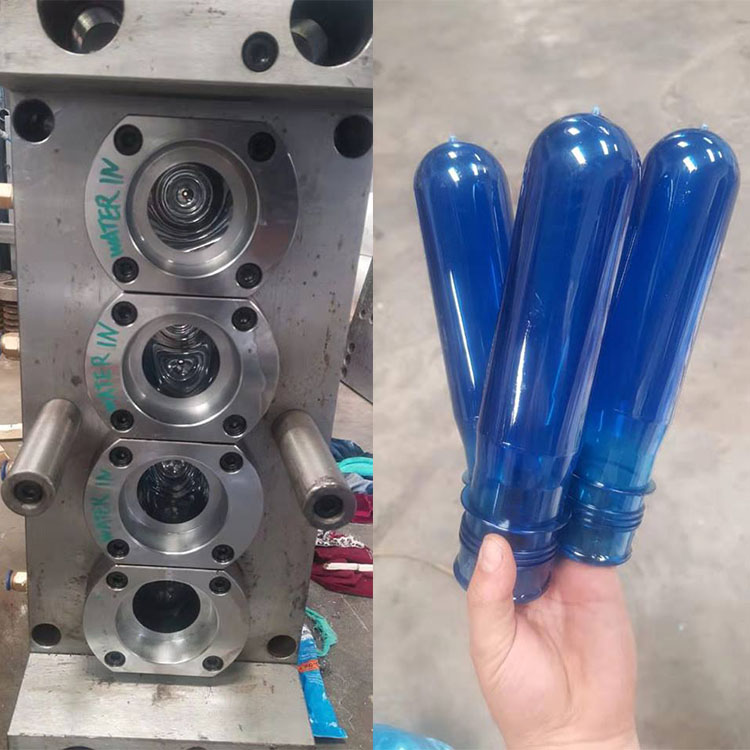 CN
CN info@seacomould.com
info@seacomould.com +86-18969612882
+86-18969612882
The difference between silicone mold and plastic mold
2019-12-13
There are many supplies in life, large or small, simple or complex products, all need to be produced with molds. Many people do not understand the processing technology of product materials. This knowledge is still lacking. There is no way to tell which products are silicone molds and which products are plastic molds. There may not be much difference between them. Is great. Today, i will talk about the difference between silicone mold and plastic mold from the material, structure and use of mold!
Differences in materials:
Silicone mold is a special mold glue for making crafts. Generally, silica gel and curing agent are mixed and stirred according to a certain ratio, and then cured at room temperature or heated. It has the characteristics of high temperature resistance, corrosion resistance, strong tear resistance and fine simulation. Silicone is a thermosetting material, which is generally injection molded. Silicone fluidity is good, so silicone molds do not need to use a water opening, and the price is cheaper than plastic molds.
Plastic mold is an abbreviation of a combination mold used for compression, extrusion, injection molding, blow molding, and low foaming molding, so it is also called: plastic mold or injection mold. It can process different shapes of plastic parts. Previously, domestic factories were called plastic factories, while Hong Kong and Taiwan areas called plastic factories as plastic companies. Plastic is a thermoplastic material, and injection molding dies are generally used. Plastic mold has the title of the mother of industry, and many new product releases now involve plastic.
Structural difference:
The material of the silicone mold is mold silicone. The general structure is composed of five components: base rubber, crosslinker, catalyst, filler and additive. In fact, the base rubber, crosslinker and filler are one component, and the catalyst is separated. As a component, this is why the mold silicone is the origin of the two-component room temperature silicone.
The structure of the plastic mold mainly includes a cavity mold with a variable cavity composed of a cavity mold substrate, a cavity component and a cavity mold clamping plate, and a cavity mold substrate, a mold component, a cavity mold clamping plate, and a mold. A convex die with a variable core composed of a cavity cut-off component and a side-cut combination plate. In order to improve the performance of plastics, various auxiliary materials such as fillers, plasticizers, lubricants, stabilizers, colorants, etc. must be added to the polymer.
Differences in use:
The raw materials of silica gel can be divided into solid silica gel and liquid silica gel according to their physical properties. Solid silica gel is mainly used for molded products. For example: silicone sleeves, silicone tableware, silicone molds, silicone buttons, etc. Liquid silicone is mainly used for extrusion molding products, such as silicone nipples and silicone tubes.
Plastic parts are widely used in every field of today's life, such as household appliances, instruments, wires and cables, construction equipment, communications electronics, automotive industry, aerospace, and daily hardware. The application of plastic is so widespread and so convenient to use that it has brought side effects, and in some areas people have to carry out a "plastic ban."
At present, environmental protection is a focus issue that people pay attention to. Silicone is also a new type of environmentally friendly raw material. With the development of society, the future development of silicone is very promising, and it is bound to get better and better. Silicone has more uses. Will also be slowly discovered. In contrast, the harm of plastic to the environment is great. If a reasonable solution cannot be found, it will be replaced by silicone.

Related Products
Latest Updated
- China automotive mold manufacturing is facing the development trend of 2025
- The major development trend of automotive mould technology
- How to find a good automotive mould supplier and manufacturer in China
- How to make the injection plastic mould gate design
- The most likely defects in the mold injection molding process
- Injection mold repair steps and precautions
- Auto mould making-automould injection moulding company
- How to choose plastic mould supplier in Taizhou China
Relative Articles
Hot Articles
- Mold plating chrome treatment technology is good for mold life
- Analysis of the causes of the fusion line of plastic mold products and corresponding improvement measures
- what are the common problem in the plastic mould injection process
- Leak-proof design of bottle cap mould
- What performance requirements should be met when selecting steel for injection mold
- When Huangyan Mold factory come back to work after coronavirus
- Coronavirus China Wuhan
- How to check the test of the injection mould
- How to choose plastic mould supplier in Taizhou China
- What principles should be followed in the design and development of bumpers mould
- Bottle cap mold manufacturing process
- Six standards for testing the quality of antifreeze bucket mould
Hot tags: china mold maker,taizhou,huangyan, suppliers, manufacturers, factory, maker,customized






